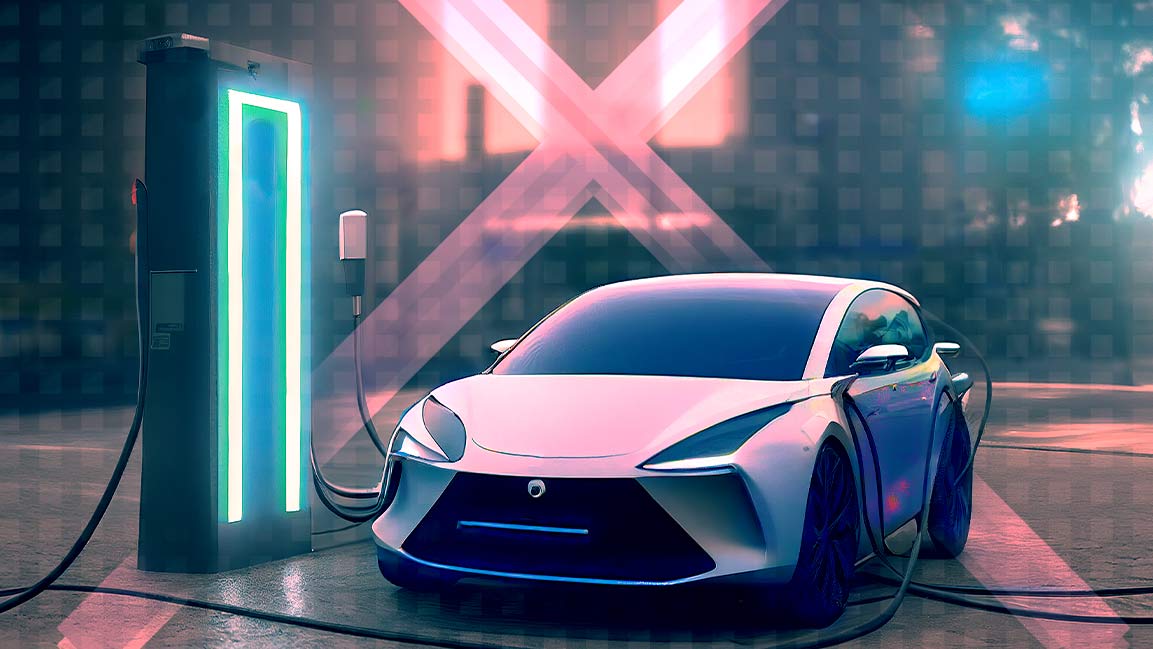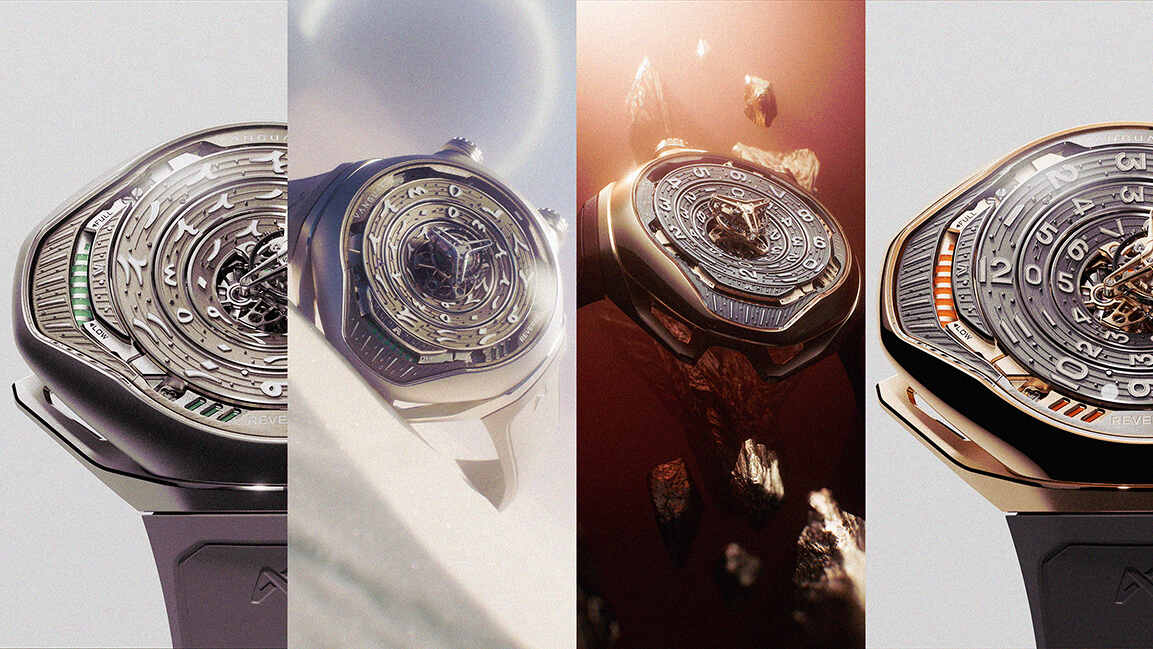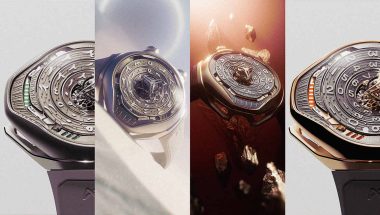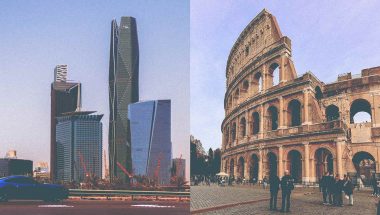- | 9:00 am
Are hybrid vehicles greener than electric vehicles in the Middle East?
Experts assert that EVs have the potential to offer more sustainable transportation despite concerns regarding production and energy sourcing.

Earlier this year, the International Energy Agency (IEA) noted a 0.9% increase in global energy-related CO2 emissions in 2022, amounting to 321 million tonnes and reaching a new high of over 36.8 billion tonnes compared to 2021.
Despite initial concerns, the energy crisis did not have as severe an impact as feared, thanks to the expansion of renewables, EVs, heat pumps, and energy-efficient technologies.
The transition to cleaner technologies is paving the way toward a more sustainable and green future.
Recent strides in this direction include the launch of Masdar City’s Smart and Autonomous Vehicles Hub. Speaking to Steve Severance, Director of Growth, at COP28, he says the aim is to electrify the mobility fleet in collaboration with the Department of Economic Development. “How do we take carbon emissions out of our driving? How do we move to an electric fleet? I think we will need to get to a full EV,” he adds.
Additionally, Volvo Group has started to deliver the first Electric Trucks to customers in the Middle East and UAE.
“Just as the Volvo Group has set ambitious Science-Based Targets (SBT) on greenhouse gas emission reductions in line with the Paris Agreement, many of our customers and their customers have also committed to sustainability goals. This encourages them to gradually phase out vehicles and machines running on fossil fuels and replace them with electric vehicles,” says Kivanc Karayol, Regional Director and Sustainability Leader at Volvo Group.
Meanwhile, Dr. Hamid Haqparwar, Managing Director of BMW Group, outlines their goal to reduce CO2 emissions per vehicle by 40% across the entire spectrum by 2030. This commitment to sustainability extends to making the whole value chain, encompassing BMW Group and the supplier network, 100% carbon-neutral by no later than 2050.
Similarly, he says that they are working towards making the vehicles more circular, using recycled and secondary materials, aiming for a target of 50% secondary materials by 2030.
With these strategic plans and goals in mind, it is clear that the push for EVs is being adopted widely and has a long-term vision. Setting everything else aside, the question remains: Are hybrid or electric vehicles the greener option?
THE GREEN QUESTION
In terms of sustainability, both EVs and hybrid vehicles are considered “greener” than traditional gasoline vehicles, according to Karayol. However, with the region aggressively adopting EVs, it is essential to assess which option causes more or less harm to the environment.
“The sustainability of EVs and hybrid vehicles can be compared on their energy source, emissions, manufacturing impact, and overall environmental footprint,” says Dr. Haqparwar.
EVs operate solely on electricity, resulting in zero tailpipe emissions. The environmental impact of EVs depends on the electricity source, making them greener when charged with renewable energy. However, the source of electricity plays a crucial role, particularly in regions where electricity is generated from fossil fuels, potentially diminishing the overall environmental benefit of EVs.
“From the operation life cycle perspective, EVs are considered more sustainable in the regions where the energy is supplied by clean energy. If the energy source is not green, then having an EV can be more harmful to the environment than owning a conventional vehicle,” says Karayol.
Moreover, the production and disposal of batteries for EVs involve materials like lithium and cobalt, which also raises environmental and ethical concerns. However, advancements in battery technology work to reduce such impacts with efforts to improve recycling and find alternative materials.
“It’s not just about the vehicle itself but also the entire life cycle, from production to disposal, and the energy grid it operates on. EVs become even more sustainable in areas with more renewable energy in the grid. As grids transition to cleaner energy sources, the environmental impact of electric vehicles decreases,” says Karayol.
On the other hand, while hybrids emit fewer pollutants than a typical traditional gasoline vehicle, their overall lifecycle emissions still tend to be higher than EVs.
“Overall, EVs are considered the greener option, especially as the global electricity grid becomes more reliant on renewable sources. Hybrids serve as a transitional technology, offering immediate emissions reductions where the electric infrastructure is still developing. In the long-term shift towards sustainability, EVs hold the advantage due to their potential for zero-emission travel when coupled with green energy sources,” offers Dr. Haqparwar.
Severance backs this statement on more sustainable electric vehicles due to hybrids’ operational dynamics, which utilize two driving systems—an internal combustion engine and an electric motor.
“When using the gasoline engine, emissions are emitted from the tailpipe, but at the same time, there is an extra battery in there, so it becomes less efficient with the added extra weight to the vehicle, resulting in consumers using more liters per 100 kilometers than they would without that battery,” he explains.
CONSUMER DEMAND
With the UAE aiming to introduce EVs by 50% by 2050 and reduce carbon emissions by 10 million tonnes in the same timeframe, consumer interest becomes crucial.
“When we started Masdar 17 years ago, there were no EVs in the market. We brought Mitsubishi Motors’ i-MiEVs into the market. They were the only ones in the UAE and weren’t commercially available. They were test cases, and we found that that particular generation of electric vehicles wasn’t ready for this heat,” says Severance.
Especially for the Middle East, there was a necessity for a more robust solution regarding battery life and the ability to handle extreme heat.
Fast forward, EVs have revolutionized, with multiple generations suited to the region’s climate. “They have great battery life, and different vehicles are also available at various price points,” adds Severance.
“The UAE government is actively promoting EV adoption through the building of charging infrastructure, offering incentives, and setting ambitious targets as part of a strategy to reduce carbon emissions and diversify the economy,” says Dr. Haqparwar.
On another note, Severance believes that we are still in the early stages of consumer demand but that it should keep pace as he considers that EVs would be an attractive choice for consumers.
“The UAE has a car culture, so when you see some of the electric vehicles that are coming out, I think they’re going to be ideally suited to the UAE,” says Severance.
“We’ve also made several strides forward with the type of EVs you can buy. There will be some more entry-level vehicles for the more price-conscious consumers. We can witness instances where you can save money through EVs, your maintenance is much lower, and the price of gas has gone up, but the price of electricity is stable, so you can count on the cost savings from using an electric vehicle,” he adds.
COP28 ONWARD
At the heart of such discussions is COP28, which is currently ongoing in Dubai’s Expo City.
The UAE’s National Hydrogen Strategy aims to produce 1.4 million tonnes of hydrogen annually by 2031 and 15 million tonnes by 2050. In line with these initiatives is the recent launch of ADNOC’s first hydrogen refueling station, intending to gather data on the long-term viability of hydrogen vehicles in the UAE.
In light of this, BMW Group observes that the future of sustainable mobility in the Middle East seems to involve a combination of battery electric vehicles (BEVs) and hydrogen fuel cell (FCEV) technologies. With this in mind, BMW Group has presented its all-electric vehicle fleet and its BMW iX5 Hydrogen at COP28.
Moreover, Dr. Haqparwar emphasizes the significance of utilizing renewable energy, stating, “The abundant solar energy in the Middle East is a key asset for the region’s sustainable energy transition, enabling the large-scale production of green hydrogen. This is crucial for energy storage and as an alternative fuel for mobility, complementing the electric vehicle infrastructure.”
In achieving net zero by 2050 for the UAE, transportation, specifically EVs, plays a significant role in that solution.
“There is much talk about hydrogen at COP28 because of its potential for particularly long-distance transportation, but also as an alternative to EVs. It is not there yet in terms of the level of adoption as EVs have been or the infrastructure, but there is a lot of promise around hydrogen,” Severance offers.
“Eventually, we want to get to a situation where we are all using EVs and where the grid is powered by clean energy, such as renewable energy and other zero carbon sources of energy.”
Karayol believes that COP28 has provided a platform to discuss how governments, institutions, society, and even individuals can perform better than before.
“Climate change is the challenge of our generation, and we are enabling our customers to be leaders in the shift towards a decarbonized transport system.”
“There should be clear plans to eliminate the dependency on fossil fuels, not only for oil-exporting countries but also for the whole oil-dependent industries globally,” he adds, expressing hopes for the outcomes from COP28.








































